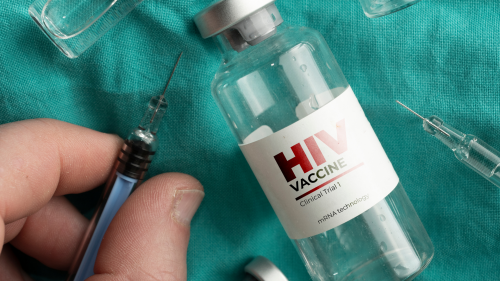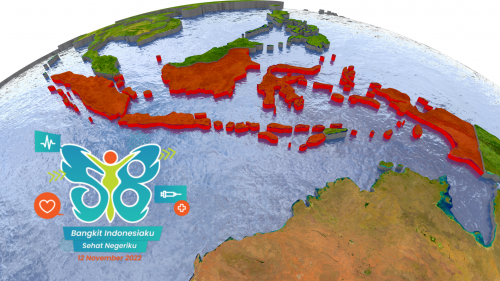HIV & AIDS Commemoration Day for Women and Girls is observed on March 10 every year. The stipulation of the warning is aimed at raising awareness, especially among women and girls, of the epidemic of HIV & AIDS which is very dangerous for the body.
Human immunodeficiency virus (HIV) is a virus that attacks the immune system and weakens people's defenses against infection. The immune system has many types of white blood cells that fight infection. HIV will enter the CD4 cell and replicate.
CD4 cells are a type of white blood cell that are an important part of the human immune system. The main function of CD4 cells is to fight infections caused by various kinds of harmful microorganisms (bacteria, viruses, parasites, fungi, and so on). In a healthy person, the normal range for a CD4 cell count is around 500-1,500. However, a person can be said to be infected with HIV when the amount of virus (viral load) has reached 100,000 copies or more per 1 ml of blood sample.
When the virus enters the CD4 cell, the virus will kill the cell and the new virus will continue to replicate more and more. The body will then respond by making more CD4 cells, but after a while, the body can no longer keep up with the multiplication of the virus. This makes a person's immune system will be weakened and easy to get sick even with the usual germ infections. The infection will last longer, be more severe, and may occur more frequently.
The most advanced stage of HIV infection is Acquired Immunodeficiency Syndrome (AIDS), which can take years to develop if left untreated, depending on the individual. AIDS is defined by the development of certain cancers, infections or severe long-term clinical manifestations.
SYMPTOMS OF HIV INFECTION
About a month after becoming infected with HIV, a person may feel like they have the flu. This is the first stage, which is called primary or acute HIV infection. Symptoms include:
- Fever
- Skin rash
- Sore throat
- Fatigue
- Swollen lymph nodes
The next stage is called clinical latency, or chronic infection. May have no symptoms, or only mild symptoms, for 10 years or more. Signs of HIV AIDS usually do not appear immediately when someone is newly infected with HIV. HIV is often only detected when it has entered an advanced stage.
Without treatment, HIV continues to multiply and a person will move on to the third stage, namely AIDS. A person who has HIV is diagnosed with AIDS when they have fewer than 200 CD4 cells per cubic millimeter of blood.
INFECTION STAGE
HIV infection to AIDS is divided into 3 phases:
- Phase one: acute HIV infection
In this early phase, people with HIV will experience flu-like symptoms, such as:
-
- Sprue
- Headache
- Fatigue
- Sore throat
- Muscle ache
- Rash
- Swollen lymph nodes
Symptoms and signs of HIV / AIDS can appear because the immune system is trying to fight the virus. These symptoms can last for 1-2 weeks or even more.
- Second phase: HIV latent phase
In this phase, people with HIV/AIDS do not show typical signs and symptoms, and can even feel healthy. Even though there are no visible signs of HIV/AIDS, sufferers can still pass it on to other people. At the end of the second phase, the white blood cells decrease so drastically that more severe symptoms begin to appear.
- AIDS
AIDS is the toughest phase of HIV infection. In this phase, the body almost loses its ability to fight disease. This is because the white blood cell count is far below normal. Signs of HIV AIDS at this stage include drastic weight loss, frequent fever, fatigue, and swollen lymph nodes. Because in the AIDS phase, the immune system is very weak, so people with HIV/AIDS will be very susceptible to infections and certain types of cancer. Diseases that usually occur in people with AIDS include:
-
- Fungal infections of the mouth and throat
- Pneumonia
- Toxoplasmosis
- Meningitis
- Tuberculosis
- Cancer, such as lymphoma
HIV PREVENTION
Prevention and early treatment of HIV infection is the main key so that this condition does not develop into dangerous AIDS. The main way to prevent HIV transmission is to avoid all things related to risky behavior. HIV/AIDS prevention can be done in various ways:
- Using condoms correctly every time you have sex
- Avoid direct contact with other people's body fluids, for example through wounds or sex
- If your partner has HIV, help your partner to get treatment
- Do not share needles, syringes, or other injecting equipment with others
- Using sterile syringes
- Prevention of transmission from mother to fetus by conducting STI and HIV tests for pregnant women who have their pregnancy checked and giving ARV drugs to pregnant women with HIV
Immediately check yourself and do an HIV detection test if you are at risk of infection or experiencing symptoms and signs of HIV/AIDS. Don't be shy or embarrassed to consult a doctor and get tested for HIV, because early treatment can slow the progression of HIV infection to AIDS.
Reference:
- World Health Organization. (2021). HIV/AIDS.
- WebMD. (2021). Effects of HIV on the Body.
- Center for Disease Control and Prevention. (2021) HIV.







